The internationally-followed, godfather of modern bushcraft —
Master Woodsman Mors Kochanski!
by Christian Noble & Joe Flowers
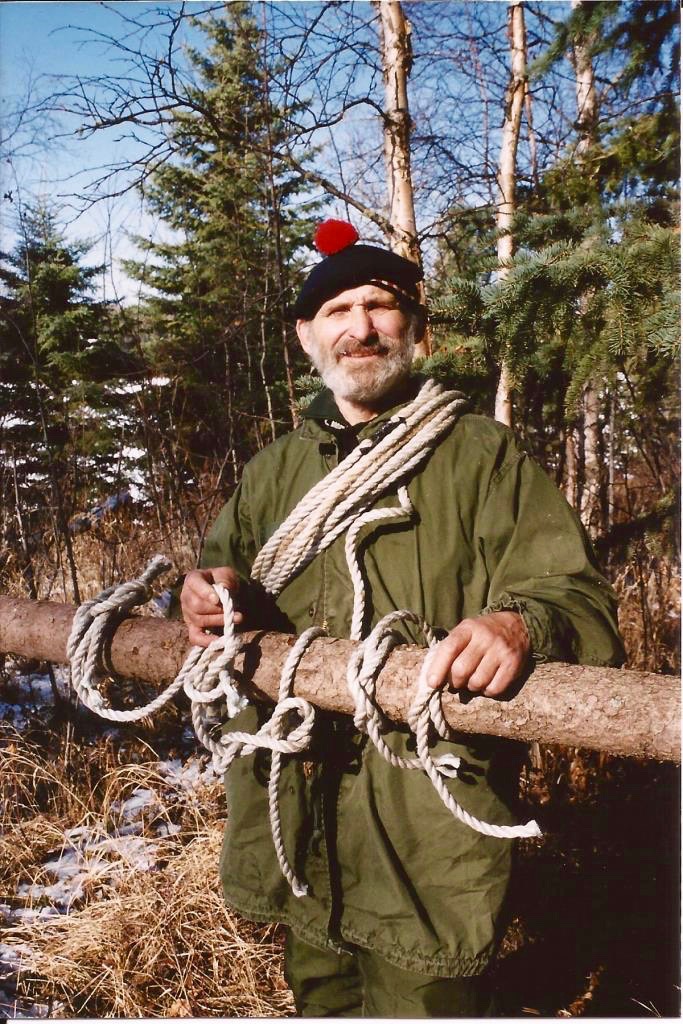
Mors as he stands for a cover shot, presenting his Bush Knots DVD, showcasing the most common and useful knots based on solid field experience.
In the modern era, there are only a handful of men who have significantly contributed to the pursuit and furthering of research, education, and scholarship of wilderness living skills and modern survival. Within that circle there exists a legendary savant, from which many seek his wisdom. That man is Mors Kochanski, and his writings should be an essential part of your wilderness knowledge foundation.
For over 40 years, Mors Kochanski has been an outdoor educator and survival instructor. When you meet Mors for the first time, you are blindsided by the amount of information he possesses. And rightfully so, as Mors has obtained wisdom from a wide breadth of resources and time in the forest. Decades of field experience as an instructor and a personal library estimated at 300,000 books places Mors in a unique category, as both an outdoor educator and wilderness living skills research pioneer. However, like a great Tibetan sage nestled on a remote mountaintop, Mors stays out of the limelight, instead choosing his Alberta cabin in the woods. It was there, in that cozy wood-heated living room, surrounded by stacks of books, that we felt a reverence for Mors that naturally creeps up with every sentence of outdoor knowledge he avows.
Meet The Master
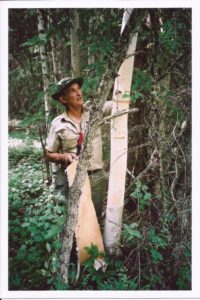
A specialist in Boreal forest wilderness living skills, Mors is fond about tree and plant identification from everything from food to fire to medicine and even making shoes.
The Kochanski family lived without electricity until Mors was ten years of age. The closest town was a two hour horse-drawn wagon ride away. Mors’ emigrated Polish parents and his time spent in the woods taught him the strong pioneering traditions learned in his youth. Mors fondly recalls picking mushrooms with his mother and the many miles traveled on the Canadian dirt roads to and from school, encountering everything from bears to wolves. In pursuit of spending money the Kochanski brothers spent summers squirrel hunting and the winters trapping weasel. Mors was the happy understudy skinning and stretching pelts, while his older brother, a belt-knife-wearing crack shot.
Early on, Mors was exposed to a modest library with less than 100 books. It was there that Kochanski began quenching his thirst for knowledge. While continuing to grow, a college-aged Mors dabbled in many things from chemical engineering to working as a welfare officer. Along the way he also obtained a pilot’s license and hacked his way through the Canadian bush as a surveyor until finally settling into a career that would allow him to fulfill his love of the outdoors and teaching.
Survival Savant
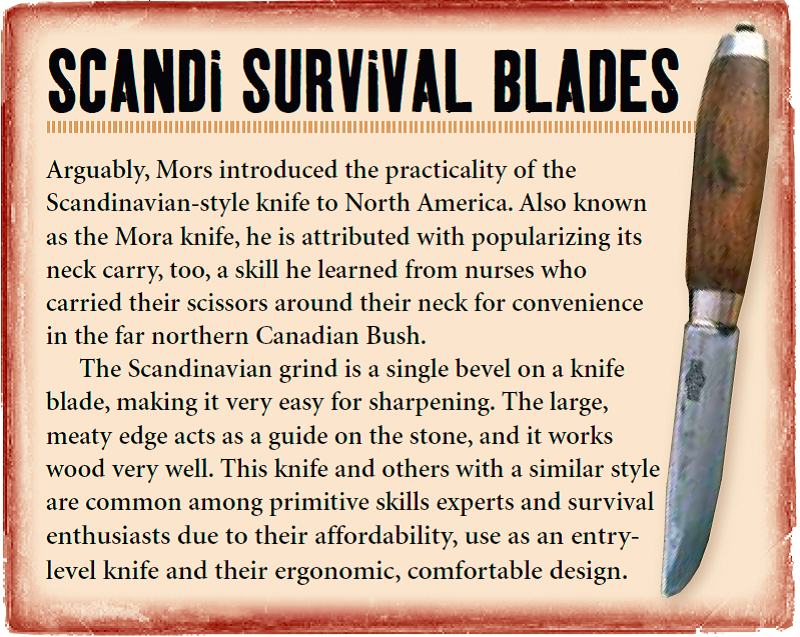 It was at 32 years of age when Mors’ true passion was realized as a full-time outdoor instructor at the University of Alberta, where he spent 22 years as assistant professor, all the while taking full advantage of the massive library. He also continued to freelance, teaching wilderness living skills for high schools and other groups. Later in his career he taught tens of thousands of school children, mostly kindergarten to sixth grade. However, there is far more to Kochanski the field instructor, as he is truly a scholar of survival.
It was at 32 years of age when Mors’ true passion was realized as a full-time outdoor instructor at the University of Alberta, where he spent 22 years as assistant professor, all the while taking full advantage of the massive library. He also continued to freelance, teaching wilderness living skills for high schools and other groups. Later in his career he taught tens of thousands of school children, mostly kindergarten to sixth grade. However, there is far more to Kochanski the field instructor, as he is truly a scholar of survival.
Those who know of Mors have likely heard the affinity he has for literature. For many years, books have lined the walls of almost every room in his house, quite literally adding thermal mass against the cold Alberta winters. It was incredible seeing the sheer volume of books in the survival section alone, as well as everything else he has collected and read over the years. As our feet scrunched in the freshly laid snow heading towards his homestead’s other buildings, it became apparent that this outdoor academic was in a league all his own. Building after building was overflowing with books both shelved and stacked, each in distinct categories covering ecology, history, architecture, medicine, zoology, and everything in between. The floors of one building had begun to sink due to the weight.
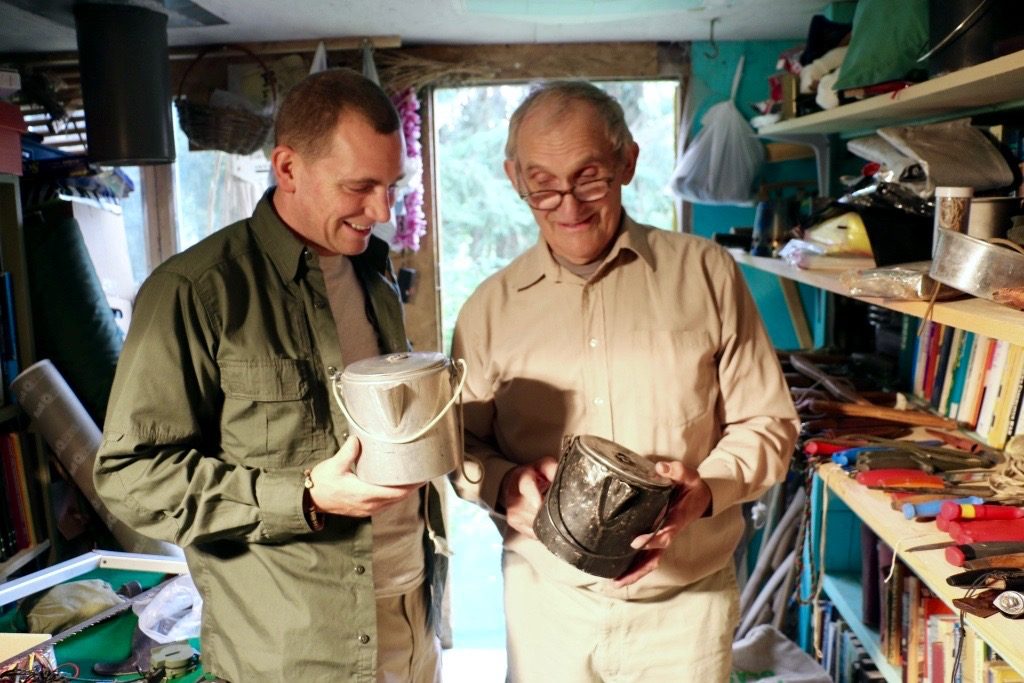
Mors’ survival pot is another thing he’s made quite popular. The use of these larger pots works well for boiling water, digging snow and dirt and holding most of one’s gear inside the pot. Here, Mors shows Joe his favorite pot.
In yet another building, erected solely for the purpose of organizing information, hundreds of binders were spanning the length of the room in many rows on multiple shelves, each collated by specific outdoor subject. A closer examination showed photocopies, notes, clippings, pictures, newspaper articles, and excerpts from magazines on every single point of outdoor knowledge one could think of, and then some. The cataloging of this information reflected decades of studious research to a degree that seems super human. It’s no wonder you can get steamrolled by the amount of information from Mors.
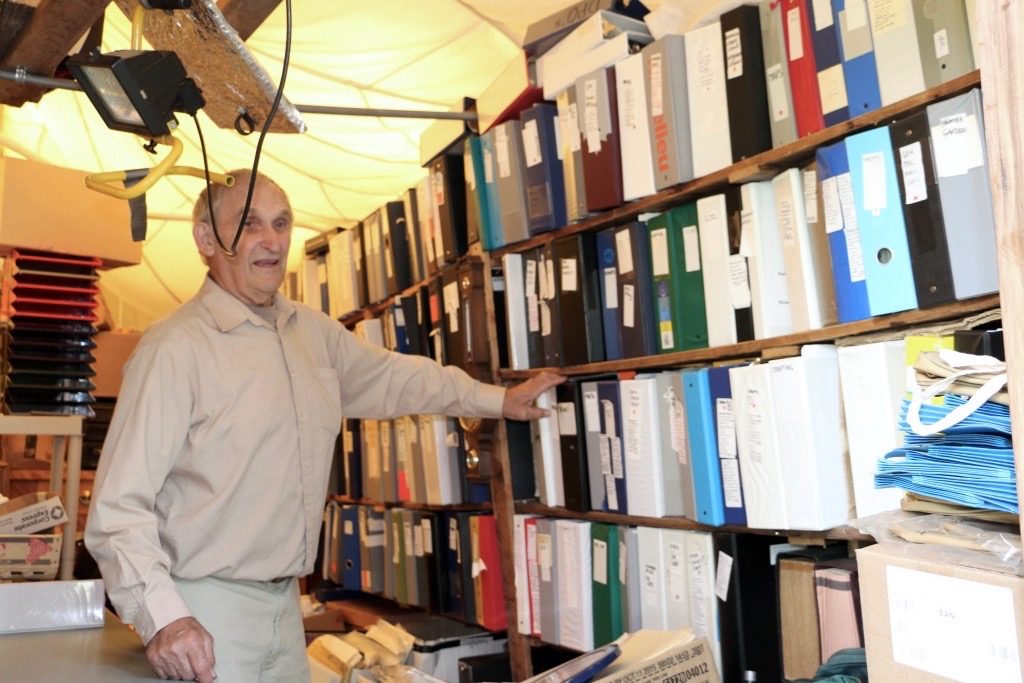
An entire building is dedicated to Mors’ copious notes, cataloging information and diagrams that he’s found in books, periodicals and elsewhere. Each subject is clearly labeled, and it is common to find multiple notebooks and binders on a single subject.

Mors Kochanski teaching a very young Cody Lundin at the Rabbitstick Primitive Living Skills Conference.
Ask any of Kochanski’s former adult students and they will attest to the inexhaustible fervor in which he teaches. Mors will spend an entire day and continue well into the night enlightening his students with copious amounts of woods knowledge. But his knowledge is much more than the practical skills. From our hikes in the forest, our adventure into the Rocky Mountains, and especially delving into his library and writings, we experienced the art, science and spirit of the forest through Mors’ philosophy of outdoor life.
Sharing A Gift

Mors preparing to teach a fire-by-friction class. He uses material from the forest around him and his knowledge of the science behind the process to teach it in a more expedient manner.
Ask any good teacher, and they will tell you who is their mentor. If they don’t, proceed with caution. Mors met his mentor in 1968, a civilian survival instructor for the Royal Canadian Air Force by the name of Tom Roycraft. “I soon realized that Tom spoke of many things not found in the camping books of the day,” Mors nostalgically recalled. Shortly after, both Mors and Tom co-instructed on survival and wilderness skills for the Canadian Department of National Defense Survival School. Kochanski loved teaching, describing it as a way “to organize your knowledge, and exercise your skill with constant repetition.”
In addition to the accumulation of instructor experience, an insatiable appetite for books and endless hours of researching everything from primitive cultures to medicine, it wasn’t long before Mors teamed up in 1976 with Don Bright to publish Wilderness Arts and Recreation magazine. Using Richard Graves Australian book Bushcraft as an example, publisher Grant Kennedy asked Mors to compose an outdoor skills book for the north.
In the middle of the Canadian backcountry in a cold shack aptly named the “book factory” by his two children, a true author was born. It was here that Northern Bushcraft, one of the most well regarded books on outdoor skills and wilderness survival, was penned. This was no easy task, as the book had to be fewer than 300 pages long, so only the absolute most fundamental skills and tools were presented.
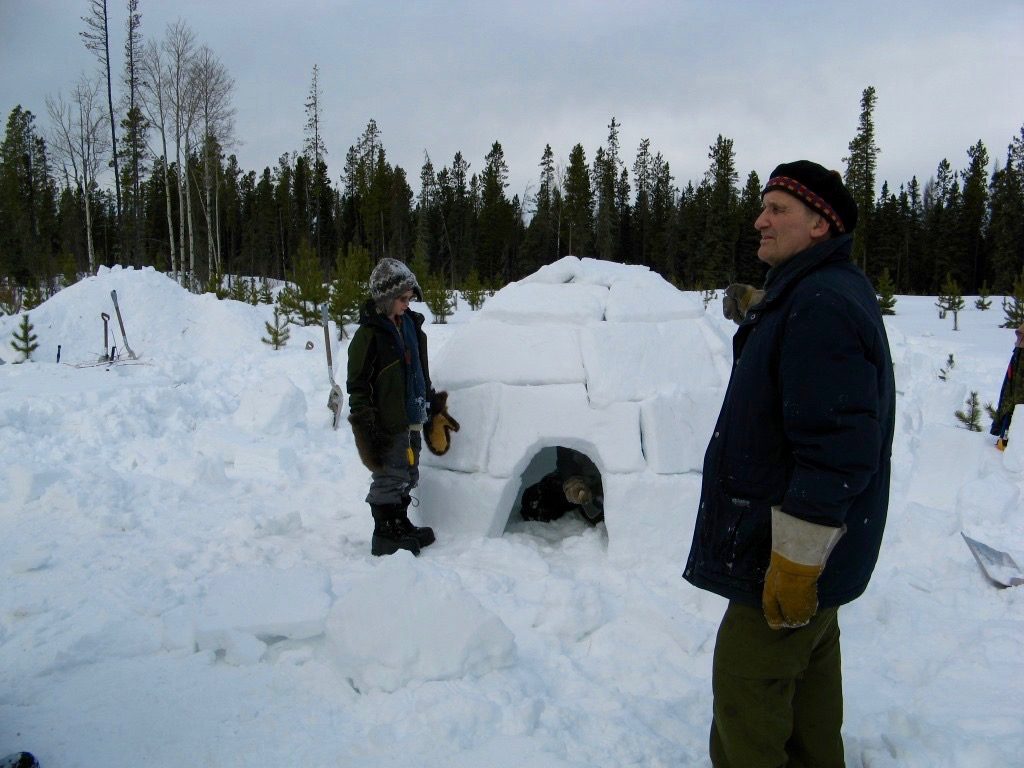
Here, Mors is instructing on how to make a proper igloo. Mors has instructed over 50,000 children in his 40 years of teaching.
While there are many books on outdoor skills and survival, Northern Bushcraft (now simply known as Bushcraft) was different. Many books simply “speak of” skills, but Mors’ book showed why and how to do so in a safe manner. Tested and matter of fact, whole chapters were dedicated to firecraft, axecraft, knifecraft, sawcraft, bindcraft, sheltercraft and more. Readers were impressed with the copious yet succinct details of information on the most practical of skills an outdoorsman should know. Northern Bushcraft became an instant classic.
 The book is but one of the many facets of Mors’ success. He is also known for his earlier writings, booklets, appearances and mentoring of some well-known instructors. More recently, Mors has teamed up with Randy and Lori Breeuwsma, the owner/operators of Karamat Wilderness Ways, where he continues to teach a variety of survival classes that are respected on a global level. Also with Karamat (Karamat.com), Mors has produced a variety of skill DVDs, booklets, and instructional videos for YouTube.
The book is but one of the many facets of Mors’ success. He is also known for his earlier writings, booklets, appearances and mentoring of some well-known instructors. More recently, Mors has teamed up with Randy and Lori Breeuwsma, the owner/operators of Karamat Wilderness Ways, where he continues to teach a variety of survival classes that are respected on a global level. Also with Karamat (Karamat.com), Mors has produced a variety of skill DVDs, booklets, and instructional videos for YouTube.
Guiding Force
Today, if a course or instructor has a solid foundation in modern survival skills or bushcraft, the odds are they are teaching a skill or ideal that Mors had a heavy hand in influencing and/or developing, whether they know it or not. Very few can comprehend what 40-plus years of outdoor education experience in the field is like, and fewer still can add the exhaustive research Mors has added to that experience. We can tell you, however, when you spend time with Mors, you will know in your heart that his wildwood wisdom is genuine and you will trust in his guidance.
Through all those years of experience and accumulated knowledge that Mors has, he will understand your aptitude for bushcraft and survival better than you know it yourself. Subsequently, this humble man can’t help but to try to guide you towards what he believes is in your best interest; it’s simply in his nature. As such, you will be hard pressed to find a better teacher to inspire you in the right direction. A sage is a person of profound wisdom, and that is the absolute definition of Mors.
>——>
But wait, there’s more Mors…
Myself and Joe Flowers had the privilege of learning from the one and only Mors Kochanski. The result being the above article appearing in the Summer 2015 issue of American Frontiersman magazine sold in both the United States and Canada.
For that and much much more, special thanks and eternal gratitude to Mors & Diana Kochanski and Randy & Lori Breeuwsmwa of Karamat Wilderness Ways. You are simply the best!
More on Mors
Magazines only have so much space, therefore Karamat Wilderness Ways and Master Woodsman share below in more detail a handful of the individual works of Mors Kochanski, many of them in Mors’ own words. His accomplishments will hopefully shed more light on his genius while offering you a chance to pick up some skills.
MORS KOCHANSKI AT A GLANCE
(Survival knowledge that you are not likely to find elsewhere)
Inventions:
– The super shelter and its many forms
– The deluxe bush bed
– The flip-flop winch
– The parabolic single hole method in bow drill fire board
– The finger test for hypothermic incapacity
Promoting and developing Tom Roycraft’s work:
– Roycraft ski-shoe
– Roycraft pack frame
– Roycraft signal fire
– Roycraft survival scarf
– The jam knot lash with 550-200-7 parachute shroud line
– The parachute conical shelter with an interior open fire
Promoting and defining:
– The importance of clothing in survival
– The importance of sleep in survival
– The fires useful in survival
– Fire size, tinder and kindling defined
– The knots useful in survival including the constrictor and the cowboy bowline
– The use of fasting in survival
– The refinement of the construction and use of the open lean-to
– The use of the baton with knife operations
– The sharpening of knives
– Defining what is a ‘survival’ knife and ‘survival’ saw
– The use of the try stick in knife skills (from a Boy Scout tradition)
– The use of rope-making hooks
– The bush built bucksaw
– The safe use of the ax
THE SCIENCE BEHIND THE LEAN-TO (thermal mass)
As an aspiring instructor, it took Mors years to understand and apply the physics behind the open-fronted lean-to. There are many points that one must consider:
– The size of the warming fire and its distance from the edge of the bed.
– The distance between the back of the shelter and the fire (the inverse cube law).
– The depth of the shelter in winter and the slope of the roof to shed rain in the summer.
– How to make the back of the shelter impervious to the infiltration of cold by weighing down the bough cover with (rotten) wood or banking it with snow.
– The proper wind orientation to minimize problems with smoke from the warming fire.
– The use of thermal mass in lean-tos.
– The strategy of stoking the fire and supplementing body warmth through exercise.
– The longest lasting winter warming fire (between stokings).
Few survival manuals provide this depth of information on the construction and use of lean-tos. The videos below are a start, but you will find even more in the E-Book and Mors’ Bushcraft Shelters DVD.
THE DEVELOPMENT OF THE ‘SUPERSHELTER’
In the mid 60’s when Mors started to instruct, canvas and parachute material was in use and polyethylene was not yet available. Poly then replaced canvas but continued to be used as as a shelter cover as if it was canvas. While the straight-poled lean-to was in vogue, Mors became enamored of flexible wand-arch shelter construction (benders) because it could be made rigid, required only a knife to build, was free-standing to more effectively use the covering material, and did not need cordage in its construction. For years clear poly was used as a cover with the front facing the fire being left open as if it was as opaque as canvas. Mors experienced an epiphany when he saw someone completely cover the framework as if it were a greenhouse causing the cover to balloon with the pressure the of warm air that had developed within it. It was obvious that the warmth was being retained longer while sparks and smoke were kept out. If a mylar ‘survival blanket’ was used on the ceiling the whole length of the body was being warmed instead of just what was exposed to the radiance of the warming fire. In the early 70’s heavy snowfall and strong winds produced suitable drifting so that Inuit snow houses could easily be built. In studying the structure and construction of the domed snow shelter it occurred to Mors that many of its features could be imitated with mylar, poly and parachute fabric and the ‘super shelter’ began to evolve over a number of years. This form of shelter is a bubble with a highly reflective ceiling and no leaks as a finger hole in the upper part of the dome would drain any warm air as if it were smoke jetting out of a chimney. On the lee side of the bubble about 2 square meters or yards of porous para cloth provide for the exchange of fresh air. The sleeping bench within should be at least chair seat height when a warming fire is used. When using body heat or candles for warmth the bed should be so near the ceiling that you are almost touching it. The closer you are to the reflective mylar without touching it the better it functions when trying to maintain warmth with body heat alone. Wrapping yourself with it becomes a disaster when body moisture accumulates between it and your skin.
In the video below, Cody Lundin espouses some of the benefits of the Kochanski Supershelter in his Winter Wonderland class at the Aboriginal Living Skills School. Lundin is always quick to point out his mentors of which he frequently references Mors.
The movable version of this shelter can be dragged a few meters to downed fuel rather than sectioning it and transporting it to the shelter. Eventually a strategy can be developed where one can get by quite well without an ax or a saw in supplying firewood for the shelter. Learn more in Mors’ Bushcraft Shelters DVD and the Supershelter E-Book.
From the master himself…
https://youtu.be/NGSC8iYhC7k
THE (DELUXE) BUSH BED
The ideal bush bed should be about chair-seat high above the ground. The elevated bed is independent of the nature (unevenness) of the ground and provides some give at the hips. It can be leveled well enough to keep you from sliding off of it while sleeping. An evacuation stretcher can be built in much the same way. The crossbar at the knees shortens the span enough to allow the use of (finger-thick) sticks thin enough to provide some give at the hips. The bed structure framework can be made to provide the means to anchor the wands in a bender construction. Learn more in the Bushcraft Shelter DVD.
THE ROYCRAFT SKI-SHOE
The ski-shoe was developed by Tom Roycraft as a simpler and more dependable alternative to trying to imitate a regular snowshoe. The shoes require a very small amount of para cord for the jam knot lashings. There are many variations of the ski-shoe: the three meter long two-stick to travel over lake ice that might be deemed to be a little thin; the short one meter long 2 or 3 stick for crusty snow or traveling on a snowmobile track that does not support your weight; the standard 5 stick shoe of your height that is calculated to accommodate your weight plus your pack, plus how powdery the snow may be. As you can shuffle along with this ski-shoe rather than having to take distinct steps as with a snow shoe you tend to travel faster with less effort. The ski-shoe can be used as a sleeping platform or cut apart to provide sticks to make a shelter. A skilled person can re-lash a ski-shoe in about 15 minutes.
Suggested References
– The Two Kilogram Survival Kit Field Manual (also available in E-Book)
– Basic Wilderness Survival in Deep Snow (also available in E-Book)
– Sticks as Tools and Implements DVD
THE ROYCRAFT ‘A’ PACK FRAME
This pack frame is based on one used by Korean farmers to carry produce to market. It is built to accommodate the stature of the user and the load to be carried. It is also useful in towing a toboggan and other such applications as it is more effective pulling with the shoulders than using a rope around the waist. The pack frame is useful in stretcher evacuations when short of manpower as you can use your shoulders for carrying rather than your arms.
https://youtu.be/S4s_jaGIv88
THE ROYCRAFT SIGNAL FIRE
The Royal Canadian Air Force tradition was to use 50 feather sticks and a tripod platform. Tom Roycraft simplified the platform construction and substituted fine (spruce) twigs for the feather sticks. Learn more from Mors in the Bushcraft Fires DVD.
THE JAM KNOT
The jam knot used with 550 para cord produces a very tight lashing with a minimum length of cordage. It may possibly be one of the most useful knots in creation, let alone survival, because it can lash, bind and bundle with such crushing force. Learn more from the Top Seven Knots and the Use of the Windlass and the Bush Knots DVD.
THE FLIP-FLOP WINCH
Where there is a need for a human to apply an unusually powerful pull, non-elastic rope and two poles can provide it. The Spanish windlass was used when winter travel by horseback was common and where there was a need to cross lakes. An ax and appropriate rope might be enough to save a horse that has broken through the ice. A fence-post-sized upright stick (the drum pole) is held vertical with one hand and a thinner winding pole provides enough leverage to pull the horse on to the surface providing that the horse is strangled with a loose noose to make it more buoyant. Your power is limited by how long one can reach out using the winding pole (unless you have an assistant). The Spanish windlass needs practice to learn how to control its tendency for instability.
On the other extreme the Finnish windlass is much more stable because it uses a heavier horizontal drum pole with the heavy end on the ground and the smaller winding end supported at one’s height (or less) by a rail parallel to the ground. The length of the winding pole is limited by it’s need to clear the ground. Mors discerned that a winch between the two extremes was possible. The drum pole can be much longer and heavier than that of the Spanish windlass and the winding pole can be longer than either of the other two. For the greatest stability the drum log has to be so heavy that you can barely flop end for end. With each half-turn the drum pole is flipped or flopped back and forth. Care must be taken to use a strong non-elastic rope. If the rope should break and sweep your legs out from under you your concern is how much of an impression your face makes on the ground or how much of an impression the ground makes on your face.
See Top Seven Knots and the Use of the Windlass.
THE SURVIVAL SCARF
A ‘survival’ scarf can have many forms ranging from a meter long tube that can be pulled over the head and face to a bag that is about the extended elbows wide and slightly longer than you are tall. A mosquito net panel may be incorporated in one end. Half the scarf may be fluorescent orange for visibility and half camouflage for concealment. Around the neck the scarf can be equal to a wool sweater in improving one’s warmth. There are so many features that can be incorporated into this type of scarf that two different ones are recommended. They weigh little and take up a small space. Other uses:
– Mosquito head net
– Bathing suit
– A turban to protect head from sun or cold when sleeping
– Act as a quilt cover to hold insulation such as dry moss or grass
– A rucksack or bag with a pack frame or pack straps
– With a large balloon as a bladder to carry a prodigious amount of water or provide flotation when inflated, or be part of a rig to convert snow to water
– A strainer to remove debris from melted snow water
– Bandages
– Stretcher component
https://youtu.be/b2P1iGc8CVw
THE FINGER TEST FOR HYPOTHERMIA
https://youtu.be/yLObF_QIwP0
MORE FROM MORS
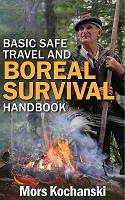 In his Basic Safe Travel and Boreal Survival Handbook.
In his Basic Safe Travel and Boreal Survival Handbook.
A survival knife should be a pry bar that can work wood very well. (It should be sturdy and capable of carving a netting shuttle in four minutes.)
A survival saw should help you fall a hug-sized tree.
A survival pot should be anodized black and have at least a seven cup capacity.
The items included in a survival kit must first fulfill two requirements: What contributes to your ability to sleep (that much better) and how it helps you to meet your water needs. Any spare space in a kit should be filled with para cord.
The best survival tarp is rip-stop nylon that is black on one side and very shiny on the other.
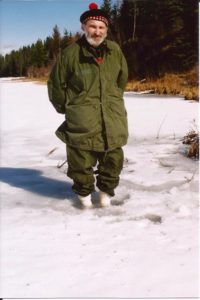 Ideal winter footwear should accommodate a thick mesh insole and three pairs of wool (preferably merino) socks. When all else fails to keep your feet warm, walk in your socks, especially when you break through the ice and fill your boots with water. In a few minutes the possibility of frozen feet is eliminated.
Ideal winter footwear should accommodate a thick mesh insole and three pairs of wool (preferably merino) socks. When all else fails to keep your feet warm, walk in your socks, especially when you break through the ice and fill your boots with water. In a few minutes the possibility of frozen feet is eliminated.
https://youtu.be/rIXvVemgEKA
The ideal survival fire is big enough to force you a step away, is made of logs as large as possible, no shorter than a half an arm span, no longer than one and a half arm spans (unless the logs are very straight), lying as parallel to each other as possible, with the spacing of all the logs being that of any finger. When short pieces evolve as the fire burns they will disarrange it; set them aside until there are enough to be placed end to end to take the place of a log.
Please note, in addition to the information already shared, you can always use the search function here on the Master Woodsman website to find even more on Kochanski, just search “Mors Kochanski” or click HERE.
FINAL THOUGHT…
“When you die, only three things will remain of you, since you will abandon all material things on the threshold of the Otherworld: what you have taught to others, what you have created with your hands, and how much love you have spread. So learn more and more in order to teach wise, long-lasting values. Work more and more to leave the world things of great beauty. And Love, love, love people around you for the light of Love heals everything.” — French Druid Triad, Francois Bourillon
As you likely gathered from reading the American Frontiersman article, Mors Kochanski is one of the most unique individuals on Earth. In our time, his influence in the field of Outdoor Living Skills is unparalleled — amazingly his generosity is of equal caliber. I and many many others will forever be thankful…
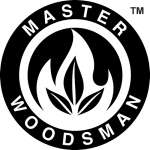


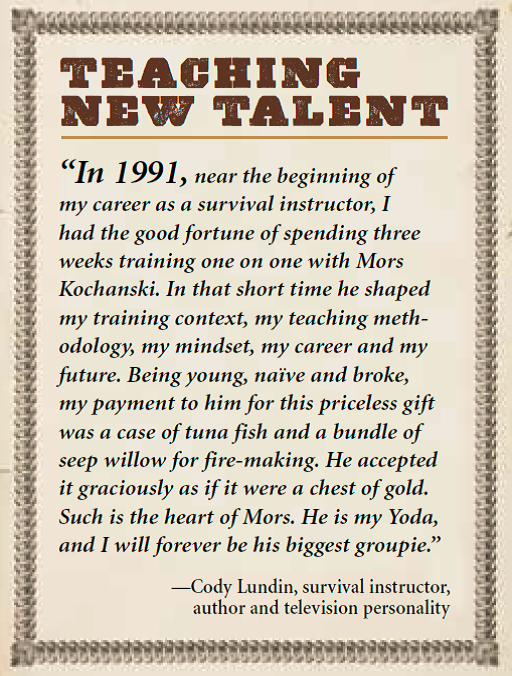
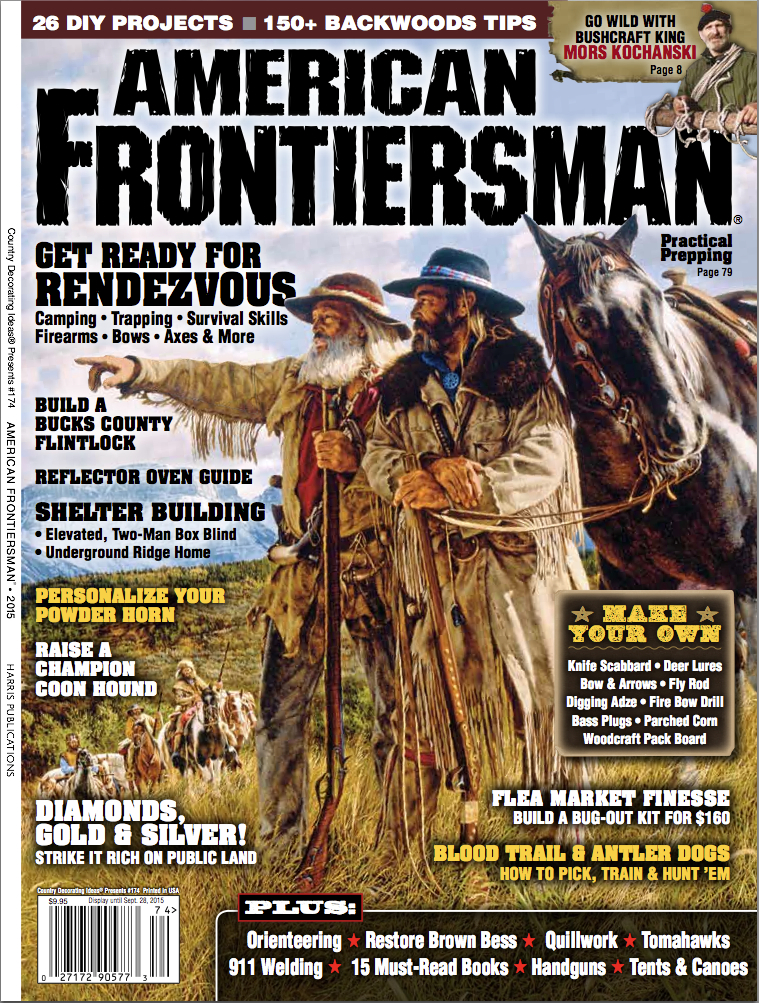
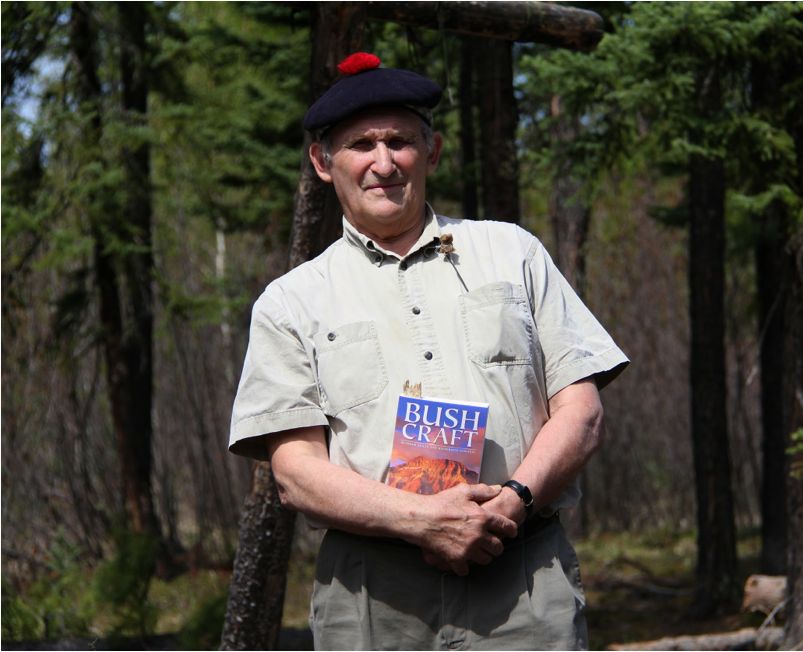
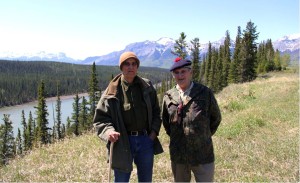
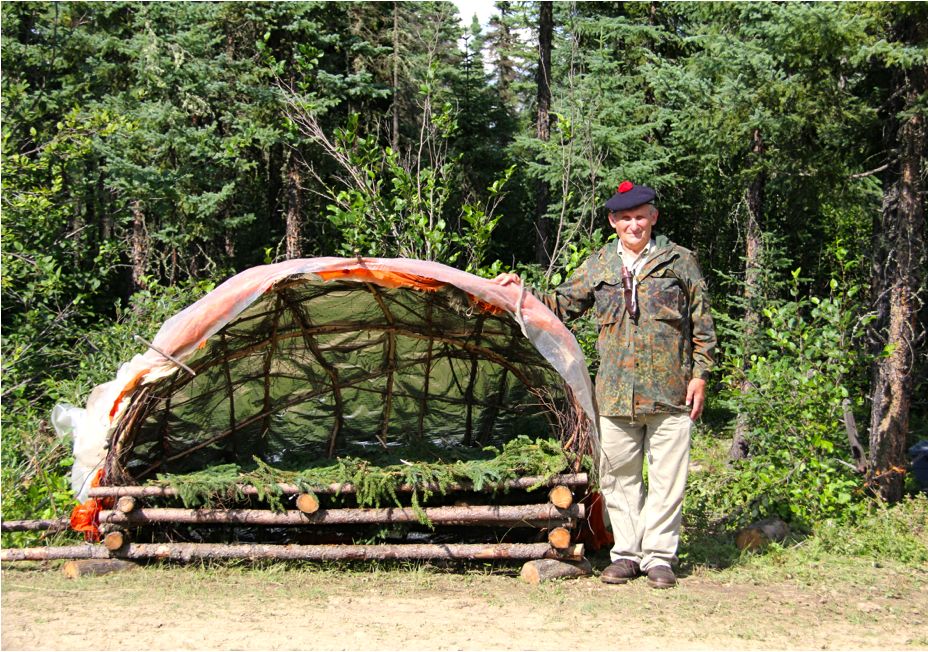
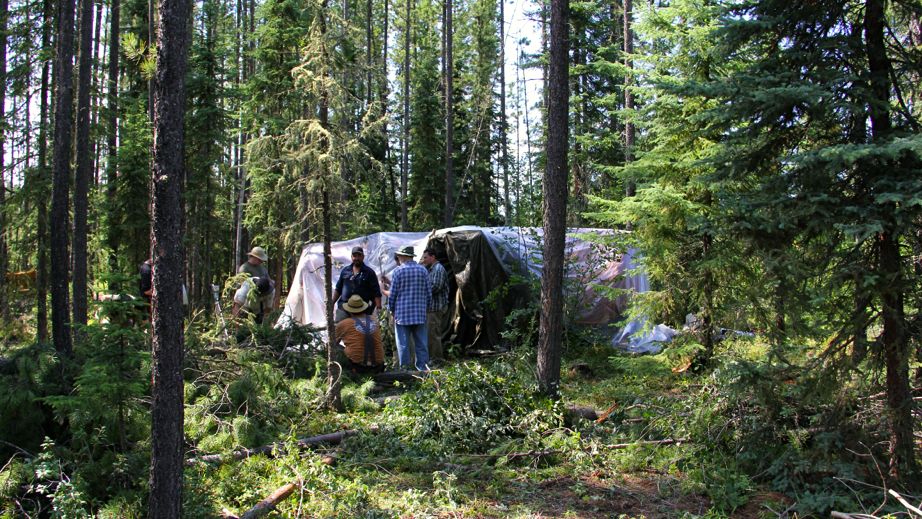
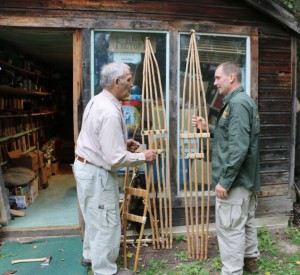

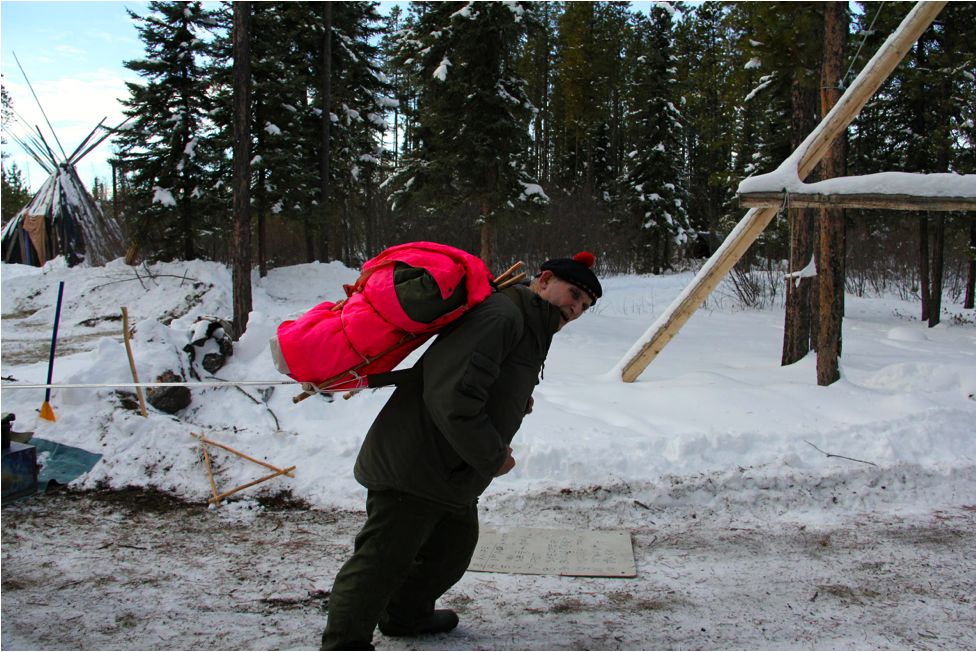
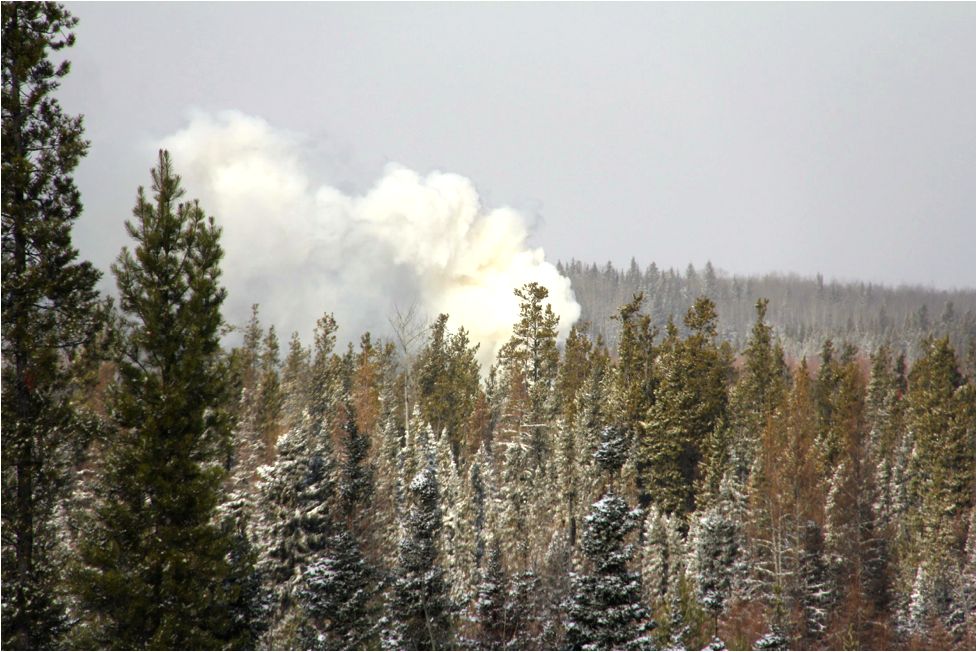
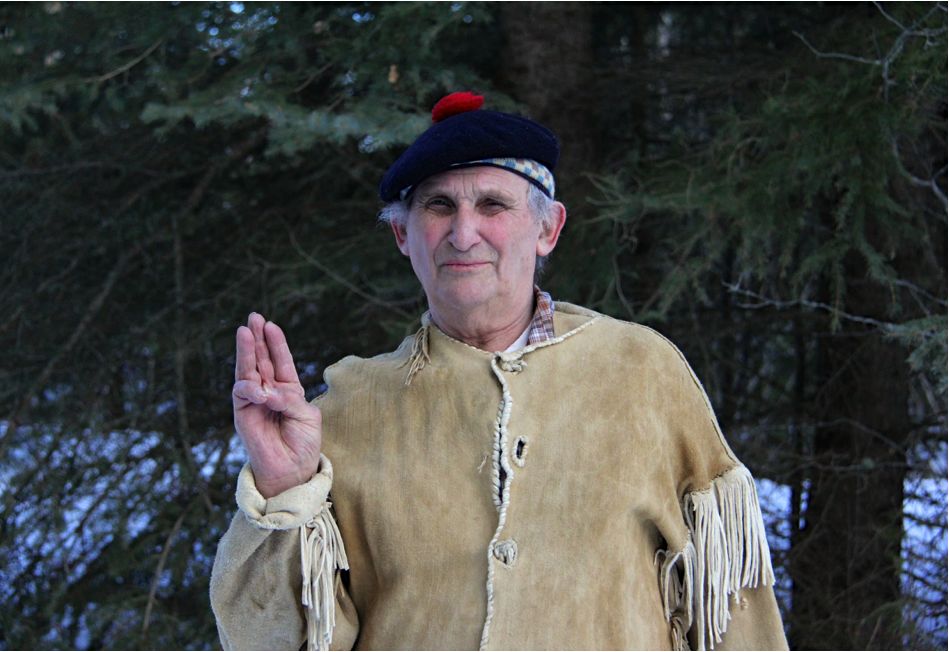
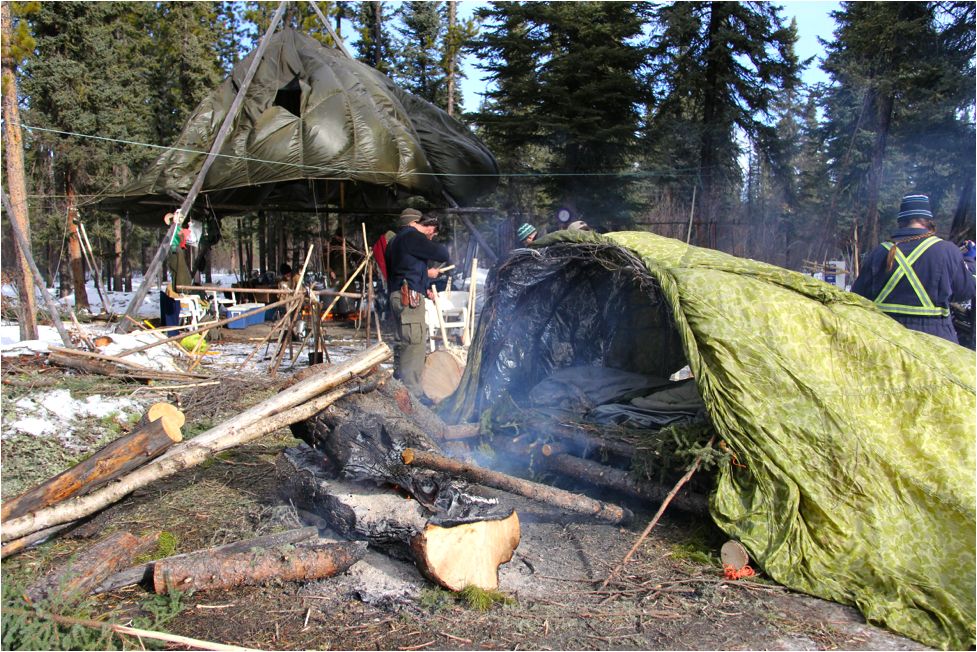

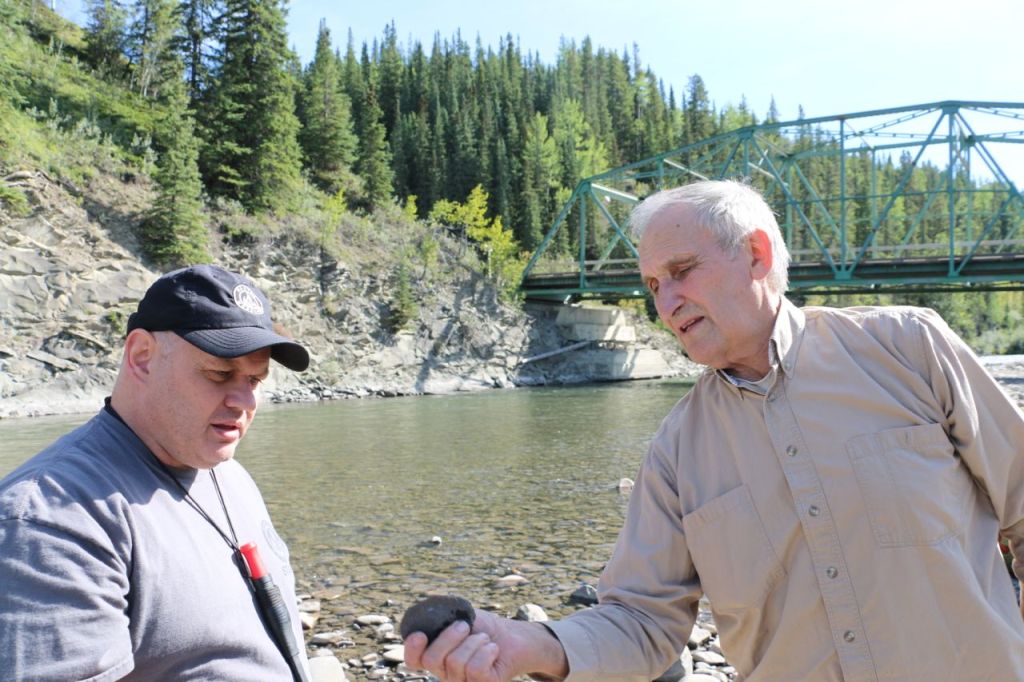

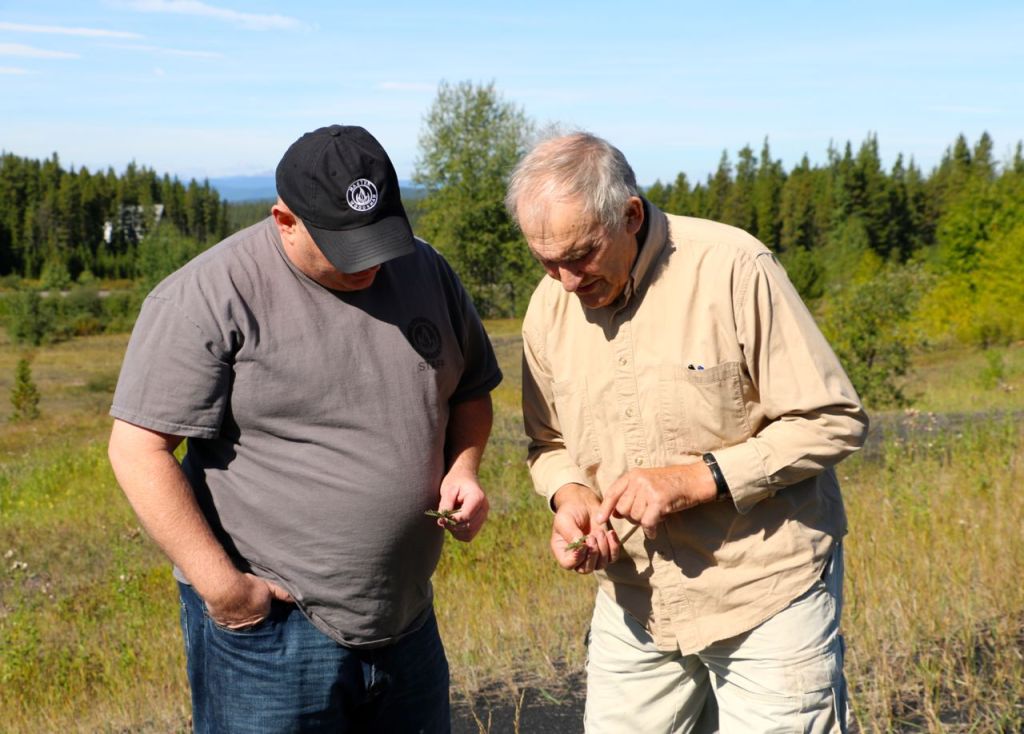
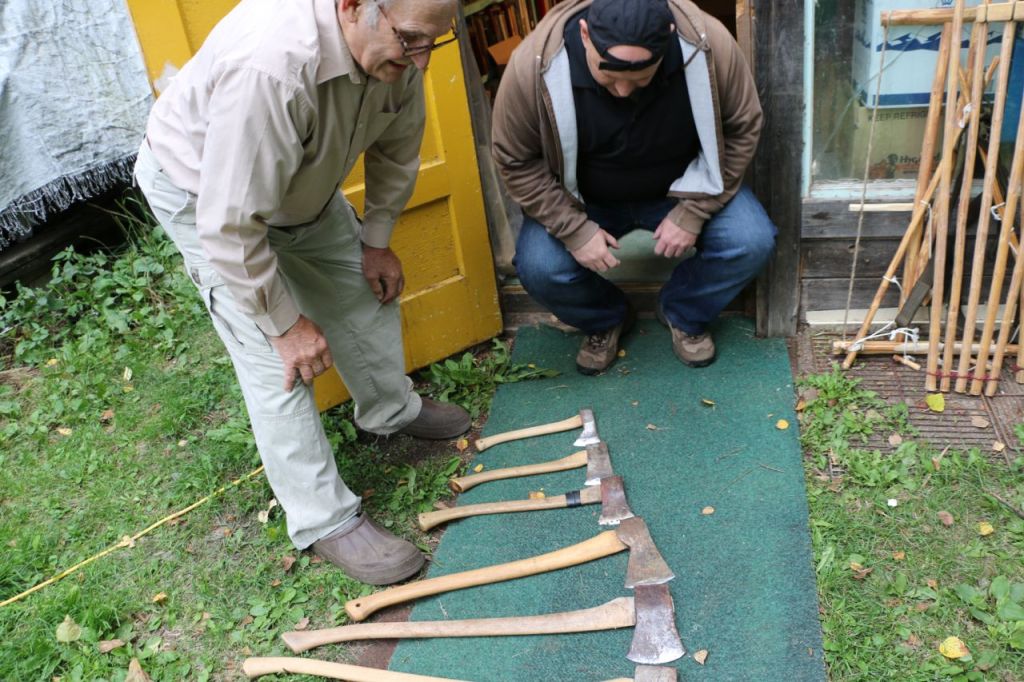
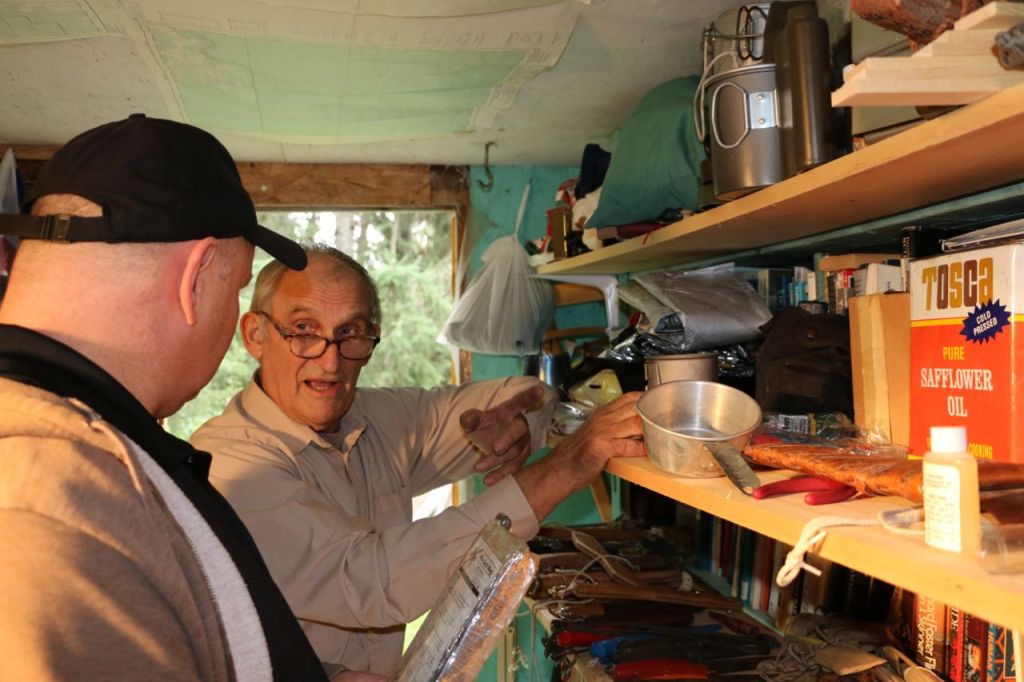
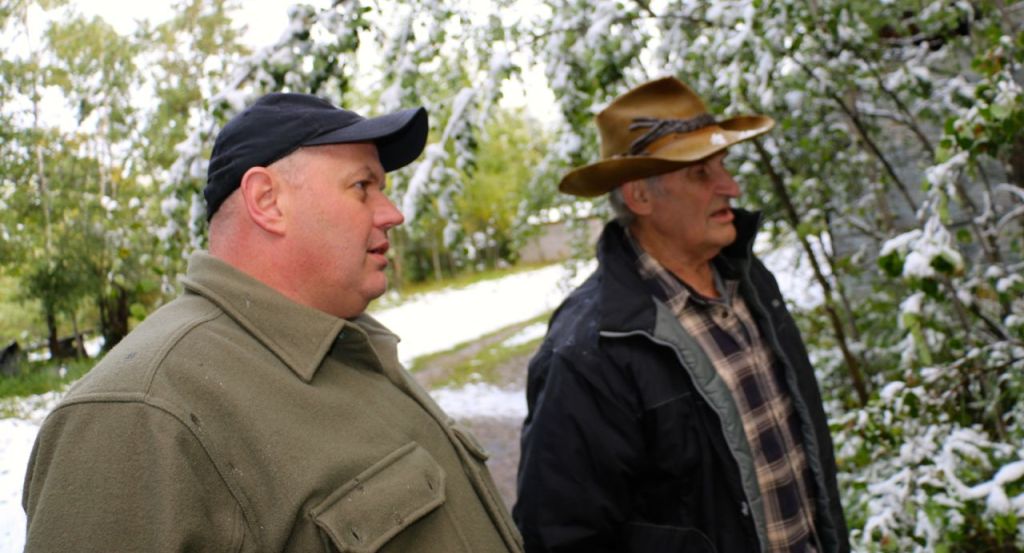
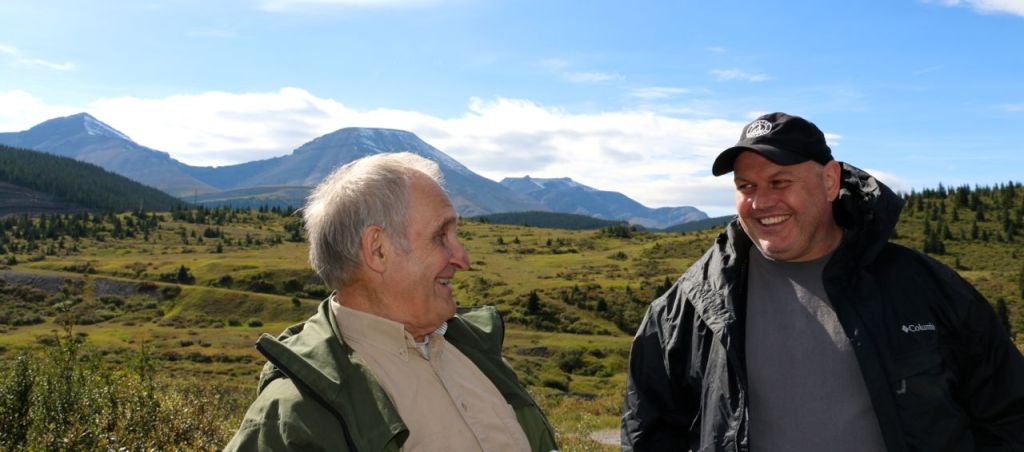
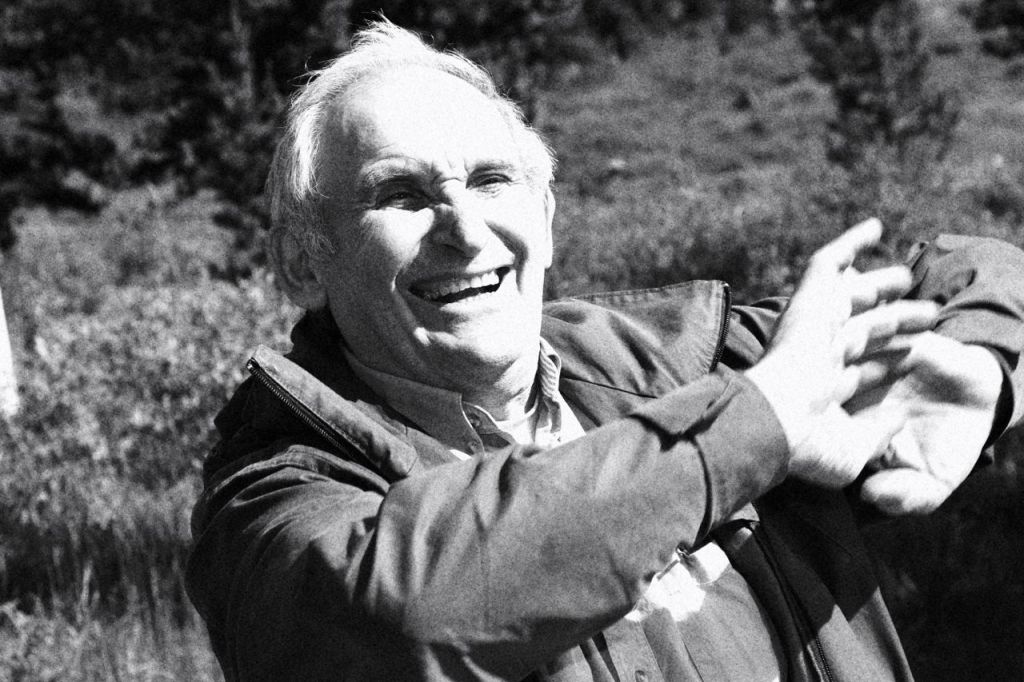
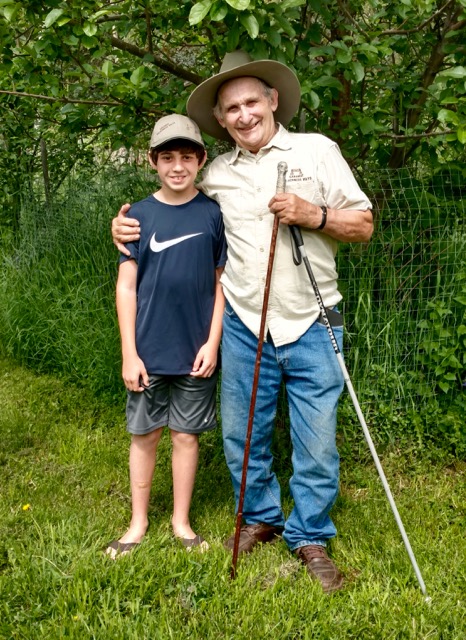
14 Responses to Bushcraft Legend: Meet The Practical & Profound Wildwood Professor, MORS KOCHANSKI